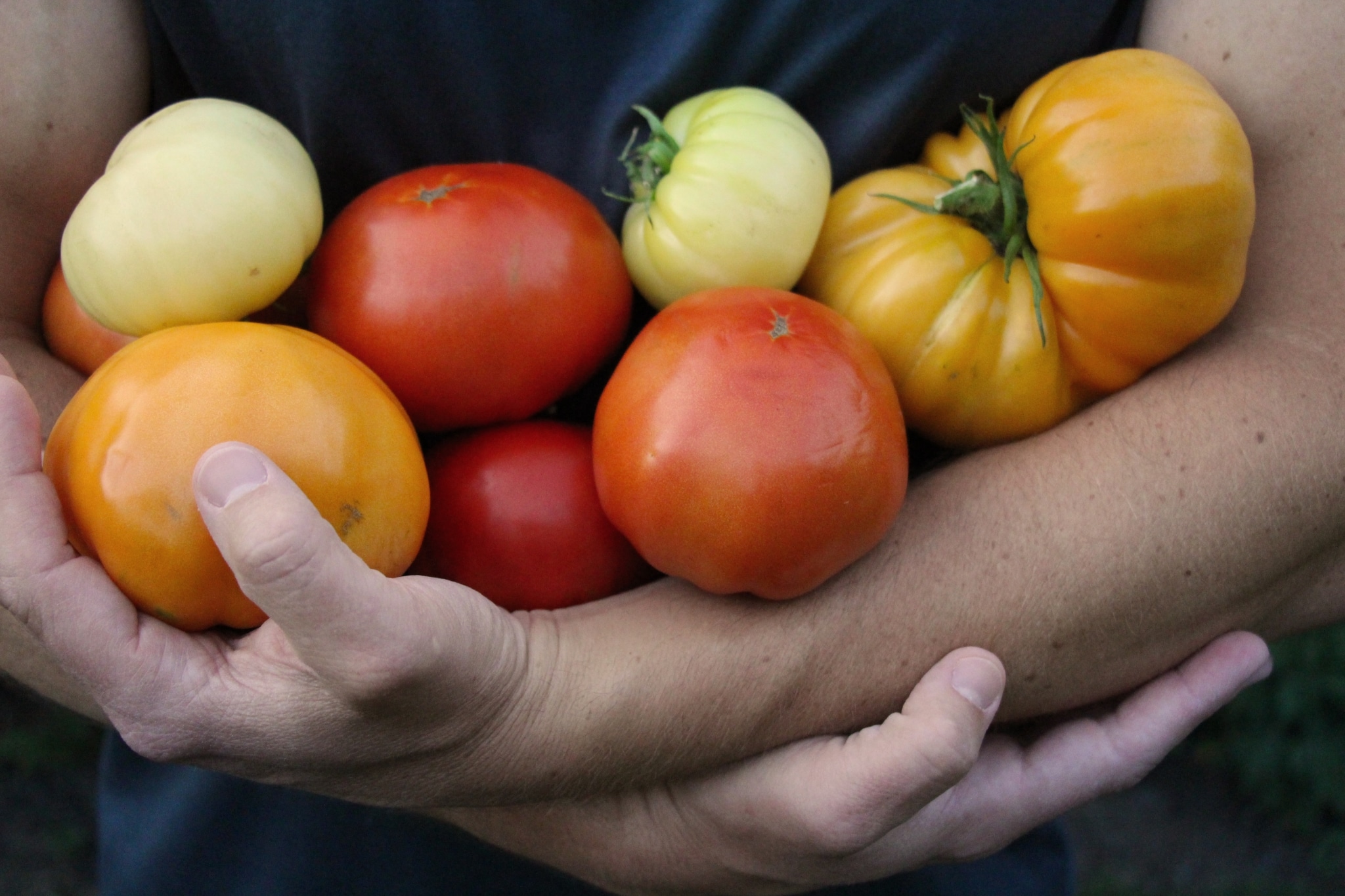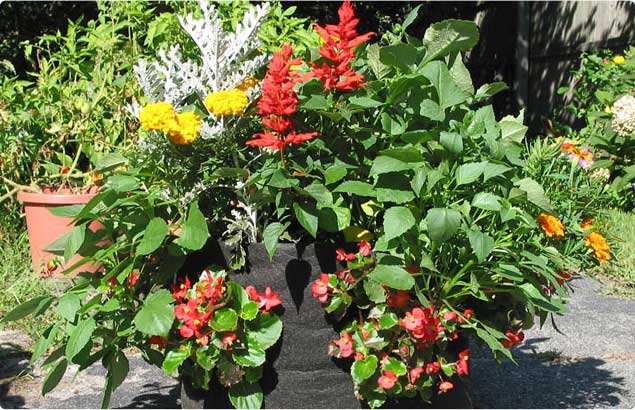Grow Great Tomatoes with These Six Tips
Homegrown tomatoes are a little slice of heaven. Their flavor and texture far surpass store-bought tomatoes, and with a seemingly endless variety of colors, shapes, and sizes available, vine-ripened tomatoes are the jewel of summer garden.
Gardeners are constantly striving to increase the health and productivity of their tomato plants, collecting tomato growing tips on everything from fertilization and pruning to disease and pest control. But, not every tomato growing secret is worth paying attention to.
To put you on the path to your best tomato crop ever, we’ve compiled six terrific tips on how to grow tomatoes without requiring a lot of your time and energy. And, we’ll start by letting you in on the best tomato growing secret of all: You don’t even need a garden!
https://vimeo.com/163562122
Tip #1: Use a fabric aeration container
Fabric aeration containers are the perfect place for growing tomatoes. Made of porous, light-weight fabric, these containers are not just easy to work with, they produce superior plants. Tomatoes grown in ceramic, terra cotta, or plastic containers often become pot-bound, and their circling roots reduce both plant growth and yields. But, the permeability of fabric aeration containers means the soil is always well-aerated, leading to the development of lots of fibrous feeder roots and preventing the plants from becoming root-bound.
Fabric aeration containers are portable, allowing you to easily move your tomato plants to maximize sunlight exposure. Plus, they’re inexpensive and don’t require a lot of space.
Tip #2: Use a high-quality growing medium mixed with compost
A very important step in growing tomatoes successfully is filling your container with the right growing medium. Tomatoes grown in the ground are highly susceptible to soil-borne fungal diseases whose spores can readily splash up onto the foliage, while those grown in fabric aeration containers are planted in the ideal growing medium for optimum growth and disease prevention and suppression.
To fill your containers, use a 60/40 blend of finely screened compost and high-quality, peat- or coir-based potting soil. Because fabric aeration containers are composed of porous fabric, there’s no need to worry about a high percentage of compost being too dense for good root growth, as is a concern with other types of containers; the roots are always well-aerated in a fabric pot.
The compost in this mix has a high water-holding capacity, reducing the need for watering tomato plants, and the macro- and micro-nutrients contained in it are slowly released for plant use over a long period of time. Compost is a known disease suppressor, with much research noting that plants grown in soils amended with compost have a marked reduction in disease, particularly those diseases caused by soil-borne pathogens.
The potting soil added to the compost improves drainage and helps prevent the container becoming too heavy. If it contains fertilizer, the potting soil component of the mix also helps feed the growing tomato plant.
Tip #3: Plant the right variety
When planting tomatoes in fabric aeration containers, some thought should be put into which variety is best for you. While any type of tomato can be grown in fabric aeration containers – from beefsteak or salad to paste or cherry – you’ll want to pick a variety that’s appropriate for whatever size fabric aeration container you have.
Use a five- or ten-gallon fabric container for each determinate, patio-type tomato. Larger, indeterminate tomato varieties will perform best in even larger containers, while miniature cherry tomatoes can be grown in a fabric bag as small as two or three gallons.
Tip #4: Water wisely
When it comes to watering tomato plants, don’t skimp. Regular irrigation results in the healthiest plants and highest yields. On the flip side, inconsistent irrigation can lead to a disorder known as blossom end rot, where the bottom of the fruits develop a dark canker.
Tomatoes growing in fabric aeration containers filled with the right mix of growing medium will likely require daily irrigation during the hot summer months; less frequently in cooler weather. Deep, thorough irrigation is best for plants. When watering tomato plants, avoid simply “sprinkling” the plants with a light application of water. Instead, amply soak the root system with each watering.
For optimum disease suppression, keep the foliage dry when watering. Wet foliage promotes fungal diseases.
Tip #5: Trellis for better growth
To maximize the yield of tomato plants and keep the developing fruits off the ground, vines should be staked or trellised to encourage them to grow vertically. While some gardeners choose to pinch off excessive plant growth, others do not. Regardless of whether or not you choose to prune your tomato plants, plant stems should be contained with a wire cage or tied to a trellis or other support structure.
Tip #6: Repot and grow tomatoes year-round!
Our final tomato growing secret: Tomato plants can be “potted up” into larger sized containers throughout the growing season. Moving an indeterminate tomato variety into a slightly bigger fabric aeration container results in a huge, incredibly productive “tomato tree” that can even be moved into a greenhouse for the winter and grown year-round.
With these excellent tomato growing tips, you’ll find that growing tomatoes successfully is a snap.







This is great information, just what I was looking for! Well written, concise, solid advice. Thank you very much.
It is good info. I’m trying growing my tomatoes in 7gal fabric grow bags this year. Started them from seed indoors in Feb (zone 5b, Colorado), transplanted to the grow bags and they seemed to thrive through May in the small greenhouse I put up.
Then I moved them permanently outdoors when the nights were no longer dipping below 40 degrees. They’re doing OK, but they don’t look super healthy. Even though the greenhouse gets sun, I think many of the plants got scorched when I moved them outside. But there’s a lot of new growth and many have tomatoes on them now. I even harvested a few ripe ones this week, but the fruit is much smaller than it should be. Hoping that’s just the early batch and I’ll get bigger ones as the plants grow larger (most are about 4′ tall now). I’m struggling a little to figure out the right amount of water and fertilizer to give them. I’m watering daily (drip system) from the bottom. The bags are sitting in 2″ deep saucers that fill up once a day, but the water gets sucked up quickly. Maybe I need to water twice daily. But I don’t know if it’s bad for them to be sitting in water most of the time (although it is just the bottom 1-2″).
One of the things I have learned is that I needed to move the plants from indoors to outdoors but keep them in the shade for up to a week before moving them to the direct sunlight full time. I learned it the hard way, losing more than half my tomato plants that first year. After that, I left them in the sun for more than 8 hours per day and watered them each morning, fertilizing them once every two weeks with liquid fertilizer. The plants started producing in July. I moved them back indoors and added a grow light to the mix and they plants are still producing now. It’s awesome.
I live in Texas where it gets REALLY hot. Hoping that the aeration factor and coolness of the bags will promote a lot of produce. I have a very small space for my garden, so 2 of the urban planters (total of 8 ft.) and 4 of the 20 gallon pots will be the sum total. Can’t wait to transplant my beautiful tomatos into their new home. Also getting some shade cloth to help with the HOT days that are coming.